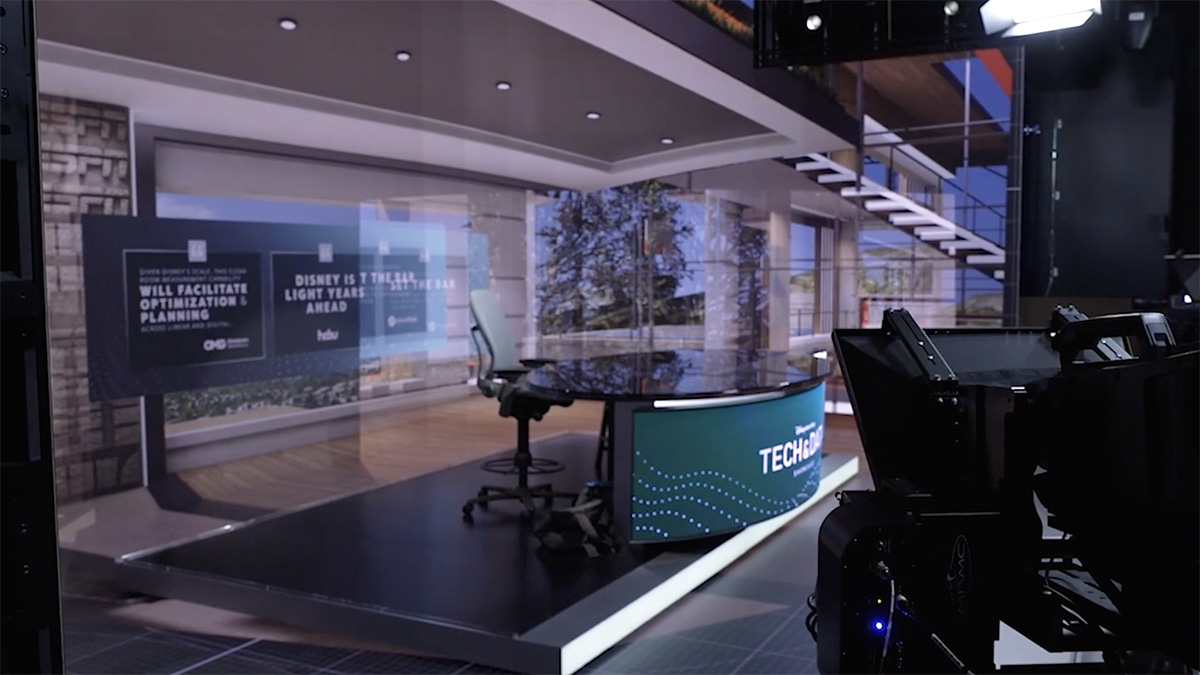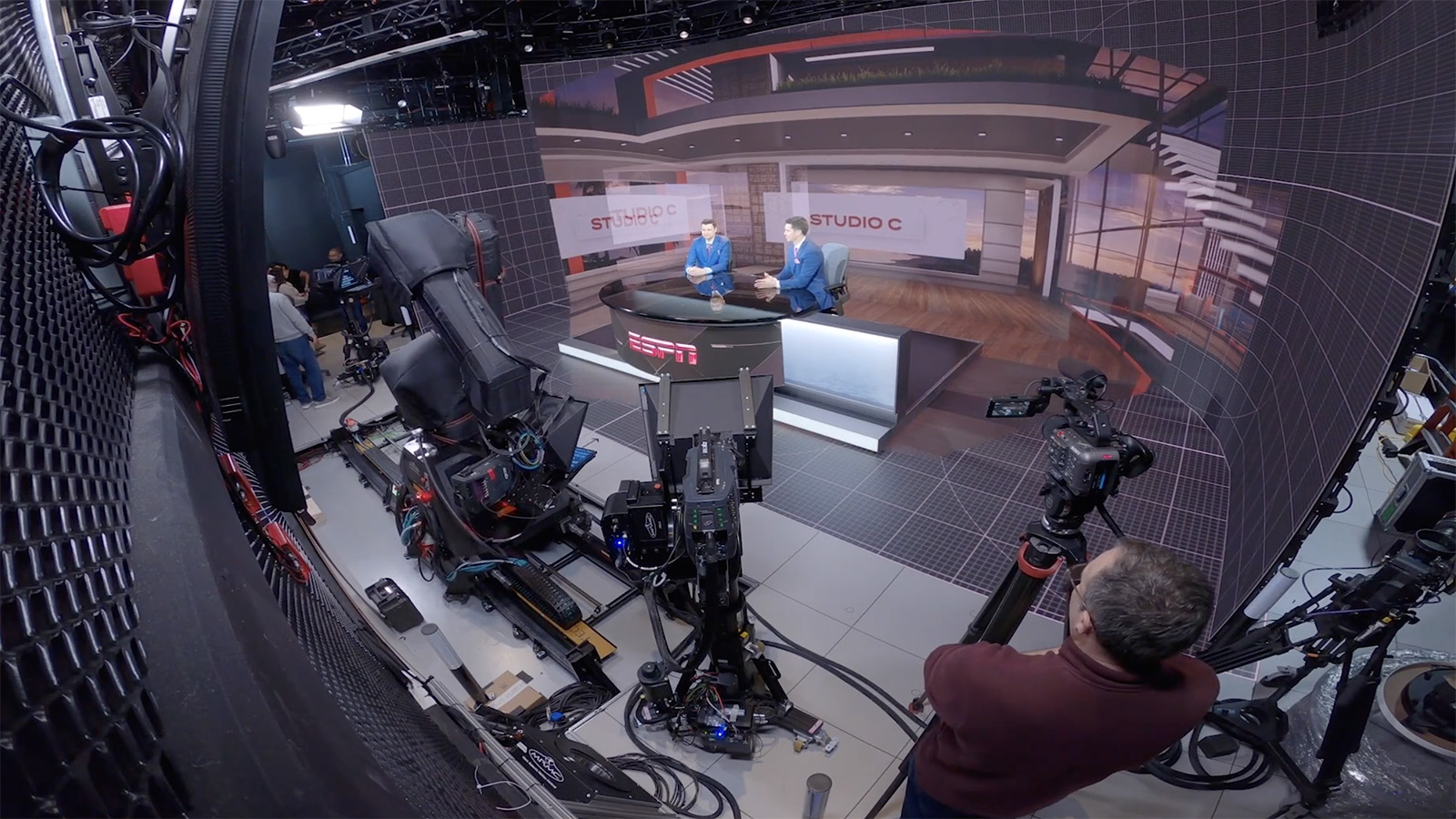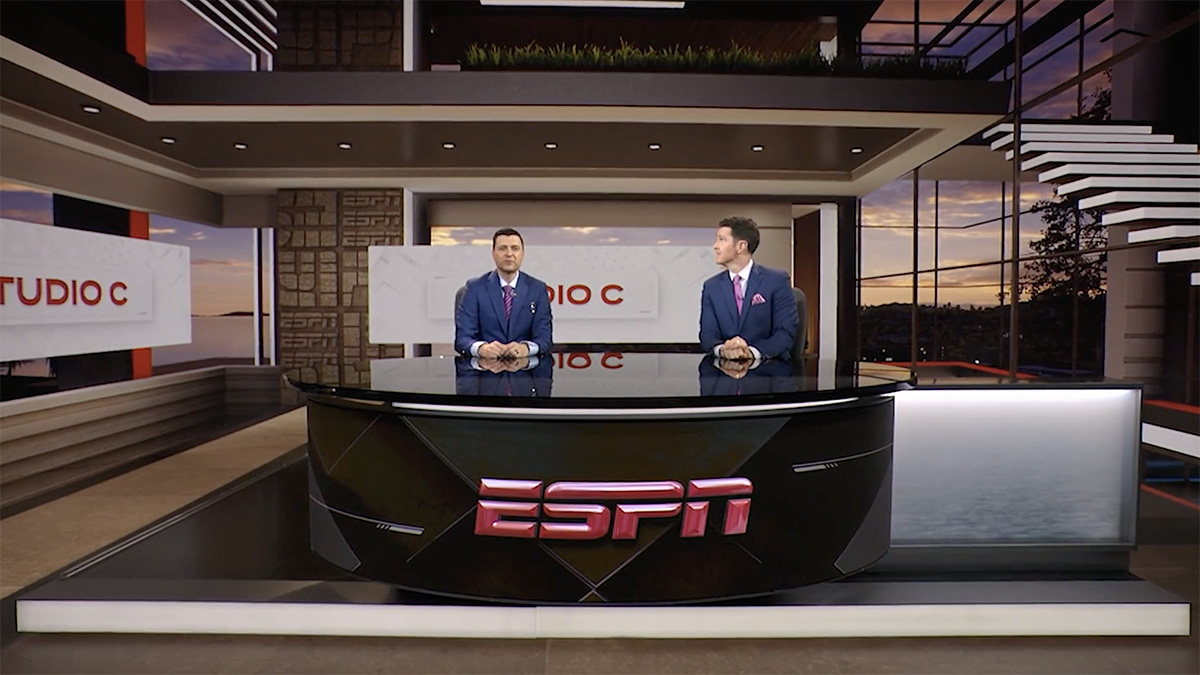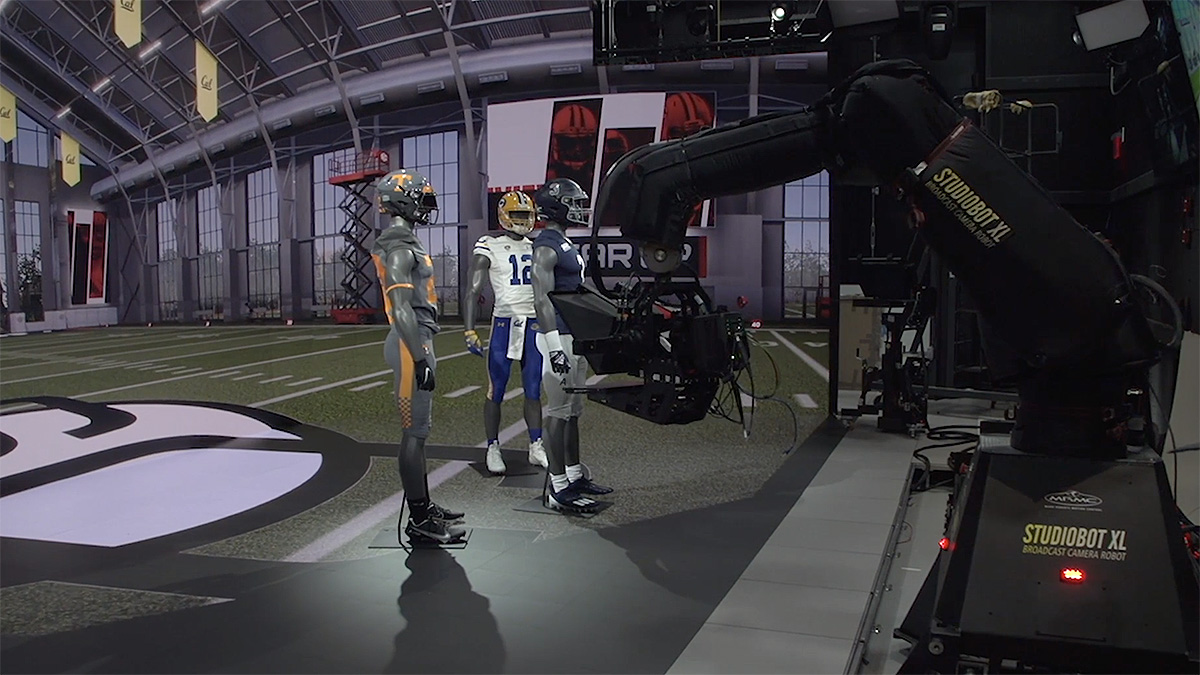ESPN embraces virtual production with Catalyst Stage

Subscribe to NCS for the latest news, project case studies and product announcements in broadcast technology, creative design and engineering delivered to your inbox.
ESPN has unveiled an innovative, immersive studio at its campus in Bristol, Connecticut, dubbed the Catalyst Stage.
Catalyst Stage builds upon the technological and conceptual milestones achieved during the production of Disney+’s hit series, “The Mandalorian.” However, the stage extends beyond the series’ notable accomplishments, providing a scalable and adaptable platform that can support both live multi-camera productions and cinematic-quality projects.
The new studio’s technology can render any setting, real or imagined, from mimicking an existing studio to a stadium. This is made possible by the collaborative effort of the Disney Entertainment and ESPN Technology teams, who have developed proprietary software to power the Catalyst Stage.

“Catalyst Stage removes production and creative limitations that come with singular, purely physical environments. In this studio, we can place our show and talent anywhere – the top of a skyscraper, a virtual twin of an existing studio, a newly-created fully-rendered studio, or the middle of a football field…you name it,” said Tina Thornton, head of content operations and creative surround, ESPN.
“If we imagine a setting, we can create it. And it allows rapid scalability in live, custom cinematic-quality, and advertising productions.”
Making this possible are tools including Ghostframe, Unreal Engine, Disguise XR, Pixotope and a robotic camera system from Mark Roberts Motion Control. This also marks the first fully robotic studio for ESPN.
Operating on 26 real-time servers, the stage can render 11 million pixels in its LED volume, refreshing 7.6 thousand times every second. ESPN notes the studio uses the largest and most complex Disguise XR system ever built for television production – processing 120 gigabytes of data every second. NEP Group handled the integration with LED from ROE Visual.


“Our new Catalyst Stage showcases the ingenuity of the Disney Entertainment & ESPN Technology team, expanding the boundaries of production and elevating the canvas of possibilities for content creation. While we are introducing this at ESPN, Catalyst Stage will enable new opportunities in advertising, and showcases the extraordinary capabilities we are advancing for the entire Walt Disney Company,” said Aaron LaBerge, president and CTO, Disney Entertainment and ESPN Technology.
The studio is designed to adapt to ESPN’s production needs and can output in a variety of formats such as 1080p or UHD all the way to 4K.
While the Catalyst Stage has initially been built for ESPN, the advancements from this project will benefit other parts of Disney in the future, the company notes.
ESPN’s Catalyst Stage joins the revamped Studio A in Los Angeles for Fox Sports, which debuted last fall for the NFL season. That studio uses similar production tools to blend physical and virtual elements in a large LED volume.
Subscribe to NCS for the latest news, project case studies and product announcements in broadcast technology, creative design and engineering delivered to your inbox.




tags
Disguise, Disney, Epic Games Unreal Engine, ESPN, Extended Reality, GhostFrame, LED Volumes, MRMC, NEP, NEP Group, Pixotope, ROE Visual, Virtual Production, XR Stages
categories
Augmented Reality, Virtual Production and Virtual Sets, Heroes, Sports Broadcasting & Production, Virtual Sets